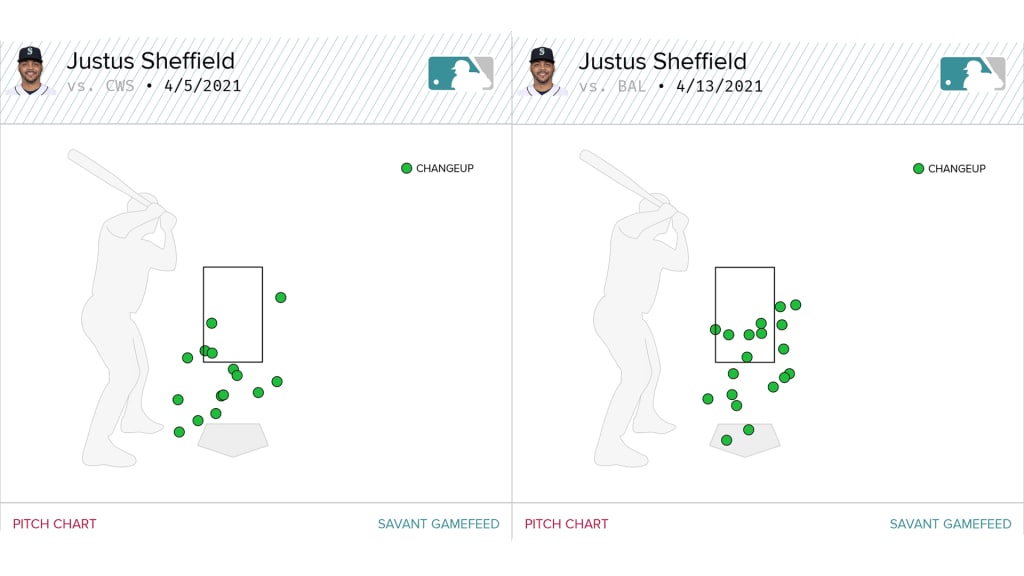For the second straight game, Kyle Seager single-handedly lifted the Mariners to a down-to-the-wire win, this time in a 4-3 eight-inning victory during the matinee of Tuesday’s seven-inning doubleheader in Baltimore. Moreover, the 11th-year Mariner salvaged a superb start from Justus Sheffield, who looked much more like the stellar rookie from 2020 than he did in his ‘21 debut.
The Mariners went on to drop the nightcap, 7-6, in light of three critical errors and Nick Margevicius not having his ‘A’ stuff, in the words of Seattle manager Scott Servais.
But back to the Seager show: Tied at 3 in the eighth inning, he connected for a 100.1-mph double off the center-field wall that nearly cleared the fence to score Mitch Haniger, who was the automatic runner on second base to start the frame. And in the bottom half of the inning, Seager saved what might’ve been the game-tying hit by snagging a 97.1-mph scorcher from Cedric Mullins at the hot corner.
In Seattle's most recent game on Sunday, Seager hit a three-run go-ahead homer off Minnesota's Alex Colomé in the top of the ninth that capped a six-run comeback that he had sparked with a solo shot in the sixth inning, when Seattle was down 6-0.
“I think he really embraces the fact that he is our veteran leader on this club,” Servais said. “I’ve often said you need your best players to step up when a game is on the line, and that's what he's doing, which is great. And it continues to rub off on a lot of these other guys.”
The veteran’s heroics came after closer Rafael Montero blew his second save since Saturday in the bottom of the seventh, which denied Sheffield his first win of 2021. Sheffield was at 77 pitches heading into the seventh, but Servais had no hesitation to turn to Montero.
Aside from a two-run homer that followed a four-pitch walk in the fifth inning, Sheffield was superb, allowing just two other hits and one additional walk while completing six innings -- a threshold he said will be one of the specific goals he takes into each start. He admittedly adjusted that goal when he awoke on Tuesday, knowing that the game was scheduled for seven innings.
“That was definitely a goal coming into this game,” Sheffield said. “I saw that we had Montero warming up, and 'skip' came up to me and told me that he was going to take the ball. No controversy at all with that. I was happy with where I was.”
The biggest takeaway from Sheffield’s start was how much stronger his changeup looked. He threw it with far more polish and conviction than last week against the White Sox -- who went 3-for-5 against it in his six-run showing -- which set up his slider for each of his five strikeouts on Tuesday.
That slider is among the best in the American League, with a 36% whiff rate since 2019. He can bury into the back foot of righties and get lefties to commit early before it dives out of the zone. But because Sheffield’s low-90s velocity and low spin on his two-seam fastball are geared more toward weak contact than swing-and-miss stuff, the effectiveness of his changeup will be vital. He only throws those three pitches.
“When he has all three pitches working for him, and [he's] using the whole plate, [the changeup] becomes a much more dangerous pitch for him,” catcher Tom Murphy said. “He becomes much more of a ground-ball pitcher with that pitch, and that’s super important, obviously. A runner gets on first base, and he was able to get some of the ground balls that he did, that’s huge. We really didn’t feel that pressure of any runners in scoring position, because of that pitch today.”
Sheffield’s changeup has just a 5 mph difference from his sinker, but because both behave differently, when each is at its best, the Mariners believe they can work congruently. The changeup is better when Sheffield lands it arm-side and his heater is more effective glove-side.

“I was able to throw it arm-side, being able to get it on that outer-half of the plate, and then go back into my sinker -- just kind of set us up back and forth like that,” Sheffield said. “I think last week, I was pulling it a lot and I was throwing heaters inside and then throwing changeups glove-side also. So it wasn't really a difference of a pitch -- actually the [White Sox] benefited from it speeding up their bats.”
Context is also key: The Orioles have the second-lowest winning percentage since the start of 2019, compared to last week’s opponent, the White Sox, who have one of the best lineups in baseball. But Sheffield will have the chance to take the momentum from Tuesday against a much stronger opponent his next turn through when he faces either the Astros on Sunday or the Dodgers on Monday.


